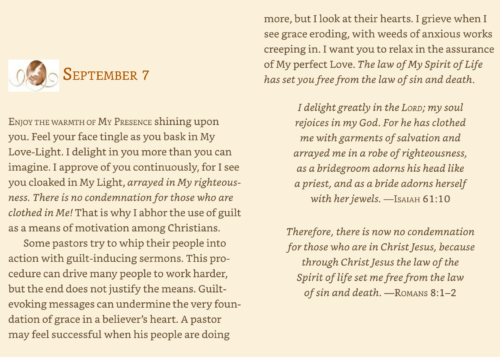The Quest and Its Questions
Bill Plotkin, depth psychologist and wilderness guide, identifies a crucial moment in the Grail story. He highlights the importance of asking ultimate questions of the soul:
In the popular European myth of the Holy Grail, the young man, Parsifal, goes out into the world to seek life’s deeper meaning—his soul (which is what the Grail ultimately symbolizes). His travels take him to the castle of the sick Grail King (who, as in most myths, symbolizes the old story, the ego’s old and fortressed way of being in the world). The only cure for the king is for an unknown knight (a Wanderer) to come along and ask the king two specific questions. But Parsifal’s mother had taught him that questions were foolish or rude, and so Parsifal does not ask. Consequently the castle (and the vison of the Grail) vanishes, and Parsifal finds himself in a great wilderness through which he must wander for many years, until he has learned enough, through the trials and losses of life, to be ready to ask the right questions. [Father Richard: Thus, it was called a “quest”—seeking the right question, unlike today’s insistence on the right answer.]
The first question is, “Lord, what ails thee?” By asking ourselves (our egos) that question—and living it—we, like Parsifal, develop understanding and empathy for how we cocreate many of our ailments and how those difficulties teach us what we need to learn. We begin to uncover our sacred wounds. We develop compassion for ourselves, learning to appreciate our mistakes, failures, and wounds as much as our talents and successes.
The second question is, “Whom does the Grail serve?” By asking “Whom does my soul serve?” we learn to turn our attention to the deeper purposes of what we do. We enlarge our vision of what’s possible and gradually learn to root our actions in soul. Eventually we learn who and what to serve. The answer will have two parts to it, like two sides of a coin: we serve the specific purposes of our souls and we serve our people, and we do one by doing the other. . . .
One of the key features of the Grail myth is that, in order to heal the king, and thereby the land, Parsifal need only ask the questions. He doesn’t need to answer them himself (nor does the king). [1]
Richard writes that to go on a spiritual quest is inherently tied to asking life’s deeper questions:
We cannot go on a quest until we know what the question is. Whom does the Grail serve? What am I doing this for? Why am I feeling what I am feeling? This anger, this pain? Unless we feel it, unless we go down into the grief, into the depths, into the great unconscious, we won’t usually know the deeper answers. We will have stayed on the level of life’s superficial questions, which is precisely not to go on the quest. [2]
The Grail Experience
Richard tells of the maturity necessary for authentic spiritual experience to change us on a deeper level. He calls this the Grail experience:
Zen masters traditionally did not allow a young man to come and study spirituality until he was at least thirty-five. Carl Jung imposed similar restrictions at his institute in Zurich. The Roman Catholic Church has had comparable guidelines in Canon Law; for example, one could not become a bishop before the age of thirty-five.
We are not told Parsifal’s age, but we assume that as the story begins, he is no longer a youth. When we set out on the journey too quickly, we are not likely to know what the questions are, especially if we do not have a mentor to guide us.
Thus, if we have an experience of God—what I am calling a Grail experience—too early in our journey, we are likely to use it for our own ego inflation. If our egos attach us to the holy too quickly, we often do not know what to do with it except to say, “Aren’t I special?”
That’s why, when the Grail enters a young person’s life, it often appears veiled. This became a relevant issue for me in the early years of the New Jerusalem Community in Ohio, where it was basically myself and a thousand younger people. There, I saw the danger of religious experience that is protected, hovered over, and talked about. We had a bunch of eighteen-year-old boys all eager to be holy and right. It doesn’t, of itself, lead to true wisdom.
While heroic stories are always exciting to the young, the Grail myth probably makes more sense for people somewhere in the middle of life. We may recall that Jesus did not have a full Grail experience until he was thirty or so. At his baptism, he hears the voice from heaven say, “You are my beloved son” (Mark 1:11). He then immediately leaves the world of productivity and efficiency and success. He goes into the wilderness, where he fasts and faces suffering, testing, and uncertainty. Knowing he is God’s beloved child changes his life.
The Grail experience is the first numinous experience that opens our eyes. It only needs to happen once. When, finally, we are able to be open and awake—and it takes work—then we are on the true, heroic journey, also made by the ones we usually call saints.
What evolves in us is less and less control. More and more we sense that Someone Else is for us, more than we are for ourselves. All we can do is get out of the way. We realize that this is a radically benevolent universe, and it is on our side despite the absurdity, sin, pain, and dead ends. It will be more like letting go than taking on. Maybe this is why it is hard to accept.
